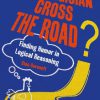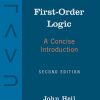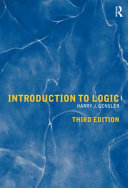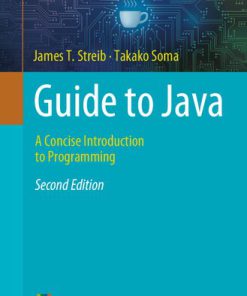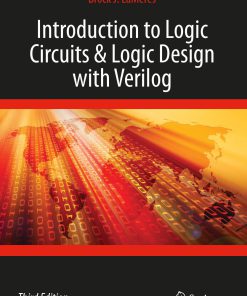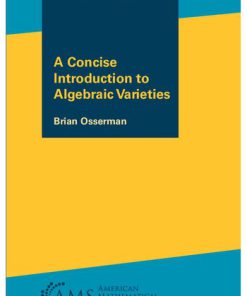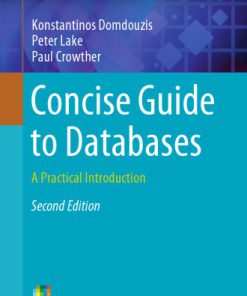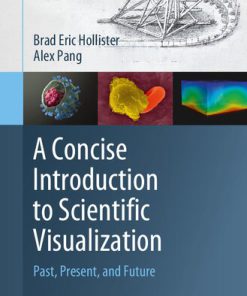A Concise Introduction to Logic (14th Edition) by Patrick J. Hurley 9780357798683 0357798686
$50.00 Original price was: $50.00.$25.00Current price is: $25.00.
A Concise Introduction to Logic (14th Edition) Patrick J. Hurley – Ebook Instant Download/Delivery ISBN(s): 9780357798683,0357798686
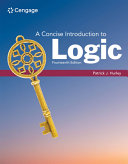
Product details:
- ISBN 10:0357798686
- ISBN 13:9780357798683
- Author: Patrick J. Hurley
A Concise Introduction to Logic
Table contents:
Chapter 1. Basic Concepts
1.1. Arguments, Premises, and Conclusions
Note on the History of Logic
1.2. Recognizing Arguments
Simple Noninferential Passages
Expository Passages
Illustrations
Explanations
Conditional Statements
Summary
1.3. Deduction and Induction
Deductive Argument Forms
Inductive Argument Forms
Further Considerations
Summary
1.4. Validity, Truth, Soundness, Strength, and Cogency
Deductive Arguments
Inductive Arguments
Summary
1.5. Argument Forms: Proving Invalidity
Counterexample Method
1.6. Extended Arguments
Summary
Chapter 2. Language: Meaning and Definition
2.1. Varieties of Meaning
2.2. The Intension and Extension of Terms
2.3. Definitions and Their Purposes
Stipulative Definitions
Lexical Definitions
Precising Definitions
Theoretical Definitions
Persuasive Definitions
2.4. Definitional Techniques
Extensional (Denotative) Definitions
Intensional (Connotative) Definitions
2.5. Criteria for Lexical Definitions
Rule 1: A Lexical Definition Should Conform to the Standards of Proper Grammar
Summary
Chapter 3. Informal Fallacies
3.1. Fallacies in General
3.2. Fallacies of Relevance
1. Appeal to Force (Argumentum ad Baculum: Appeal to the “Stick”)
2. Appeal to Pity (Argumentum ad Misericordiam)
3. Appeal to the People (Argumentum ad Populum)
4. Argument Against the Person (Argumentum ad Hominem)
5. Accident
6. Straw Man
7. Missing the Point (Ignoratio Elenchi)
8. Red Herring
3.3. Fallacies of Weak Induction
9. Appeal to Unqualified Authority (Argumentum ad Verecundiam)
10. Appeal to Ignorance (Argumentum ad Ignorantiam)
11. Hasty Generalization (Converse Accident)
12. False Cause
13. Slippery Slope
14. Weak Analogy
3.4. Fallacies of Presumption, Ambiguity, and Illicit Transference
15. Begging the Question (Petitio Principii)
16. Complex Question
17. False Dichotomy
18. Suppressed Evidence
19. Equivocation
20. Amphiboly
21. Composition
22. Division
3.5. Fallacies in Ordinary Language
Detecting Fallacies
Avoiding Fallacies
Summary
Chapter 4. Categorical Propositions
4.1. The Components of Categorical Propositions
4.2. Quality, Quantity, and Distribution
4.3. Venn Diagrams and the Modern Square of Opposition
Existential Import
Venn Diagrams
The Modern Square of Opposition
Testing Immediate Inferences
Note on Boole, Venn, and Existential Import
4.4. Conversion, Obversion, and Contraposition
Conversion
Obversion
Contraposition
4.5. The Traditional Square of Opposition
Testing Immediate Inferences
4.6. Venn Diagrams and the Traditional Standpoint
Proving the Traditional Square of Opposition
Testing Immediate Inferences
4.7. Translating Ordinary Language Statements into Categorical Form
1. Terms Without Nouns
2. Nonstandard Verbs
3. Singular Propositions
4. Adverbs and Pronouns
5. Unexpressed Quantifiers
6. Nonstandard Quantifiers
7. Conditional Statements
8. Exclusive Propositions
9. “The Only”
10. Exceptive Propositions
Summary
Chapter 5. Categorical Syllogisms
5.1. Standard Form, Mood, and Figure
5.2. Venn Diagrams
Boolean Standpoint
Aristotelian Standpoint
5.3. Rules and Fallacies
Boolean Standpoint
Aristotelian Standpoint
Proving the Rules
5.4. Reducing the Number of Terms
5.5. Ordinary Language Arguments
5.6. Enthymemes
5.7. Sorites
Summary
Chapter 6. Propositional Logic
6.1. Symbols and Translation
6.2. Truth Functions
Definitions of the Logical Operators
Computing the Truth Value of Longer Propositions
Further Comwparison with Ordinary Language
6.3. Truth Tables for Propositions
Classifying Statements
Comparing Statements
6.4. Truth Tables for Arguments
6.5. Indirect Truth Tables
Preliminary Skills
Testing Arguments for Validity
Testing Statements for Consistency
6.6. Argument Forms and Fallacies
Six Valid Argument Forms
Two Invalid Argument Forms
Refuting Constructive and Destructive Dilemmas
Note on Invalid Forms
Summary and Application
Summary
Chapter 7. Natural Deduction in Propositional Logic
7.1. Rules of Implication I
7.2. Rules of Implication II
7.3. Rules of Replacement I
7.4. Rules of Replacement II
7.5. Conditional Proof
7.6. Indirect Proof
7.7. Proving Logical Truths
Summary
Chapter 8. Predicate Logic
8.1. Symbols and Translation
8.2. Using the Rules of Inference
8.3. Quantifier Negation Rule
8.4. Conditional and Indirect Proof
8.5. Proving Invalidity
Counterexample Method
Finite Universe Method
8.6. Relational Predicates and Overlapping Quantifiers
Translating Relational Statements
Using the Rules of Inference
8.7. Identity
Simple Identity Statements
“Only,” “The Only,” and “No … Except”
“All Except”
Superlatives
Numerical Statements
Definite Descriptions
Using the Rules of Inference
Summary
Chapter 9. Analogy and Legal and Moral Reasoning
9.1. Analogical Reasoning
9.2. Legal Reasoning
9.3. Moral Reasoning
Summary
Chapter 10. Causality and Mill’s Methods
10.1. “Cause” and Necessary and Sufficient Conditions
10.2. Mill’s Five Methods
Method of Agreement
Method of Difference
Joint Method of Agreement and Difference
Method of Residues
Method of Concomitant Variation
10.3. Mill’s Methods and Science
Summary
Chapter 11. Probability
11.1. Theories of Probability
11.2. The Probability Calculus
1. Restricted Conjunction Rule
2. General Conjunction Rule
3. Restricted Disjunction Rule
4. General Disjunction Rule
5. Negation Rule
6. Bayes’s Theorem
Additional Applications
Summary
Chapter 12. Statistical Reasoning
12.1. Evaluating Statistics
12.2. Samples
12.3. The Meaning of “Average”
12.4. Dispersion
12.5. Graphs and Pictograms
12.6. Percentages
Summary
Chapter 13. Hypothetical/Scientific Reasoning
13.1. The Hypothetical Method
13.2. Hypothetical Reasoning: Four Examples from Science
Radium
Neptune
Atmospheric Pressure
Spontaneous Generation
13.3. The Proof of Hypotheses
13.4. The Tentative Acceptance of Hypotheses
Summary
Chapter 14. Science and Superstition
14.1. Distinguishing between Science and Superstition
14.2. Evidentiary Support
14.3. Objectivity
14.4. Integrity
14.5. Abusing Science
People also search:
a concise introduction to logic
a concise introduction to logic 14th edition
a concise introduction to logic 13th edition
a concise introduction to logic pdf
a concise introduction to logic 12th edition pdf
You may also like…
Society Politics Philosophy General Miscellaneous Philosophy
Introduction to Logic by Harry J Gensler 9781317436102 1317436105
Computers - Programming
Engineering - Electrical & Electronic Engineering
Introduction to Logic Circuits Logic Design with Verilog 3rd Edition Brock J. Lameres
Mathematics - Logic
Mathematics - Geometry and Topology
A Concise Introduction to Algebraic Varieties 1st Edition Brian Osserman
Computers - Programming
Concise Guide To Databases: A Practical Introduction Konstantinos Domdouzis
Physics - Others
Mathematics - Logic
First-Order Logic: A Concise Introduction by John Heil 9781647920104 1647920108
Science (General) - Research & Development
A Concise Introduction to Scientific Visualization: Past, Present, and Future Hollister

